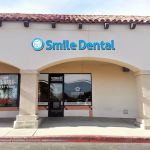
How to Prevent Gum Disease and Improve Gum Health: Essential Tips for a Healthy Smile
- 1. Understanding Gum Disease
- 2. Common Causes of Gum Disease
- 3. Effective Ways to Prevent Gum Disease
- 4. Tips for Improving Gum Health
- 5. When to See a Dentist
1. Understanding Gum Disease
Gum disease, also known as periodontal disease, is a common condition that affects the gums and the tissues surrounding your teeth. It’s important to understand the various stages of gum disease and how they can affect your oral health. I’ve seen firsthand the impact it can have, as my own family members have experienced the stages of gum disease due to neglecting proper oral hygiene.
The Stages of Gum Disease
There are generally two stages of gum disease: gingivitis and periodontitis. Gingivitis is the early stage, which causes redness, swelling, and irritation of the gums. This stage is usually reversible with proper oral care. However, if untreated, gingivitis can progress to periodontitis, where the gum tissue becomes severely inflamed, and the bone supporting the teeth can be damaged, potentially leading to tooth loss.
2. Common Causes of Gum Disease
There are several factors that can contribute to the development of gum disease. Knowing these causes can help prevent it from developing in the first place. I’ve discovered over time that while some causes are genetic, most can be prevented with the right care and attention.
Poor Oral Hygiene
The most common cause of gum disease is poor oral hygiene. Inadequate brushing and flossing can cause plaque to build up along the gumline, eventually hardening into tartar. This buildup leads to the inflammation of the gums, which can progress into full-blown gum disease. I’ve seen many people overlook basic brushing and flossing, which unfortunately leads to the development of gingivitis.
Smoking
Another major contributor to gum disease is smoking. Smoking weakens your immune system, making it harder for your body to fight off infections, including those affecting your gums. A close friend of mine quit smoking after years of battling gum issues, and since then, their gum health has significantly improved.
Genetics
While lifestyle habits play a major role, genetics can also influence your susceptibility to gum disease. Some people are genetically predisposed to have gum issues regardless of how well they care for their teeth. I’ve personally seen individuals in my family who, despite having great oral hygiene, still develop gum disease due to their genetic makeup.
3. Effective Ways to Prevent Gum Disease
Preventing gum disease is not as difficult as it may seem, but it requires consistency. Over the years, I’ve learned several effective ways to maintain gum health and prevent gum disease from developing.
Brush Your Teeth Twice a Day
Brushing your teeth twice a day is the foundation of good oral hygiene. Use a fluoride toothpaste, and brush for at least two minutes to ensure you remove all food particles and plaque buildup. I’ve found that using an electric toothbrush like the Philips Sonicare ProtectiveClean 6100 makes a huge difference in ensuring my teeth and gums are properly cleaned.
Floss Daily
Flossing is essential for removing plaque and food particles between the teeth and along the gumline. While brushing does a great job cleaning the surface of your teeth, flossing helps clean areas that your toothbrush can’t reach. I personally recommend flossing every night before bed to maintain optimal gum health.
Use an Antibacterial Mouthwash
Incorporating a mouthwash into your routine can help reduce bacteria in your mouth and prevent gum disease. I’ve used Corsodyl Mouthwash in the past, which is an excellent option for treating and preventing gingivitis. It helps eliminate harmful bacteria and keeps your gums healthy.
Maintain a Healthy Diet
A nutritious diet is essential for maintaining strong gums. Eating a balanced diet rich in vitamins, especially Vitamin C, can help your body fight off infections. I’ve found that seniors who maintain a healthy diet have stronger gums and are less prone to gum disease. Fresh fruits and vegetables like oranges and leafy greens are great choices for gum health.
Quit Smoking
If you smoke, quitting can significantly improve your gum health. Smoking reduces blood flow to your gums, making them more susceptible to infection. Quitting not only benefits your lungs but also plays a vital role in preventing gum disease. One of my relatives quit smoking last year and has noticed a remarkable improvement in their gum health since.
4. Tips for Improving Gum Health
Improving gum health isn’t just about preventing disease—it’s also about maintaining and nurturing healthy gums. Here are some additional tips I’ve found useful over the years.
Regular Dental Checkups
Routine dental visits are essential for early detection of gum disease and other oral health issues. I make it a priority to visit my dentist at least twice a year for professional cleanings and checkups. This helps catch any potential problems before they escalate.
Use a Soft-Bristled Toothbrush
Using a soft-bristled toothbrush is important to avoid damaging your gums. Hard bristles can irritate the gums and contribute to gum recession. I personally switched to a soft-bristled brush and noticed less irritation and bleeding during brushing.
Massage Your Gums
Gentle gum massage can help improve circulation and promote healthier gums. I recommend gently massaging the gums with your toothbrush for a few seconds during each brushing session. This simple habit can make a significant difference in gum health.
5. When to See a Dentist
If you notice any signs of gum disease, such as red, swollen, or bleeding gums, it’s important to seek professional help. Early intervention can prevent the condition from worsening. I’ve had a few family members who waited too long to address their gum issues, and as a result, they experienced tooth loss. Don’t wait—visit a dentist as soon as possible if you notice any symptoms.
For more information on gum health and to discover the best products for preventing gum disease, visit Dentistry Toothtruth.







 Smile Dental4.0 (495 review)
Smile Dental4.0 (495 review) Braces Braces4.0 (202 review)
Braces Braces4.0 (202 review) Niantic Dental Associates PC4.0 (10 review)
Niantic Dental Associates PC4.0 (10 review) MapleTree Pediatric Dentistry4.0 (102 review)
MapleTree Pediatric Dentistry4.0 (102 review) Brilliant Smiles Family Dental4.0 (65 review)
Brilliant Smiles Family Dental4.0 (65 review) Ascend Dental Design5.0 (362 review)
Ascend Dental Design5.0 (362 review) The Importance of Oral Health Education During Pregnancy for a Healthy Pregnancy
The Importance of Oral Health Education During Pregnancy for a Healthy Pregnancy Best Tips for Brushing Your Teeth Properly for Healthy Gums: Essential Techniques for Oral Health
Best Tips for Brushing Your Teeth Properly for Healthy Gums: Essential Techniques for Oral Health Why Skipping Dental Checkups Can Lead to Bigger Oral Health Problems
Why Skipping Dental Checkups Can Lead to Bigger Oral Health Problems Advantages of Porcelain Dental Restorations
Advantages of Porcelain Dental Restorations How Can Diabetes Cause Tooth and Gum Problems? Preventing and Managing Oral Health Issues
How Can Diabetes Cause Tooth and Gum Problems? Preventing and Managing Oral Health Issues Healthy Habits for Promoting Good Oral Health and Hygiene: Tips for a Healthy Smile
Healthy Habits for Promoting Good Oral Health and Hygiene: Tips for a Healthy Smile